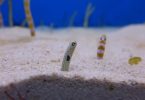Table of Contents
Green algae are an important part of any aquarium ecosystem. They provide food for fish and other aquatic creatures, and can help to keep the water clean and clear. However, if left unchecked, they can quickly take over an aquarium and become a nuisance. In order to grow healthy green algae in your aquarium, it is important to understand the factors that contribute to their growth, and to take steps to maintain a healthy balance in your tank.
In this guide, we’ll explore the steps to successfully grow healthy green algae in your aquarium and maintain a harmonious aquatic habitat.
Understanding Algae: The Green Wonders
Before we dive into the process of cultivating green algae, let’s understand what these tiny wonders are. Algae are simple, plant-like organisms that can photosynthesize using sunlight to produce their own food. They come in various colors, including green, red, brown, and even blue-green. In our case, we’re focusing on green algae, which is highly beneficial for your aquarium’s ecosystem.
Types of Healthy Green Algae
Not all green algae are suitable for your aquarium, so it’s essential to choose the right types. Some common and beneficial green algae species include:
- Diatoms: Diatoms are microscopic algae with intricate glass-like structures. They are great for controlling nutrient levels in your aquarium and act as a food source for some aquatic species.
- Cladophora: This filamentous algae has a bushy appearance and provides hiding spots for small organisms. It helps improve water quality by absorbing excess nutrients.
Setting Up The Aquarium
Choosing The Right Aquarium
First things first, you need to select the right aquarium for cultivating green algae. Consider the size of the tank and the available space in your home.
A larger aquarium is generally more stable and easier to maintain than a smaller one. Additionally, choose a tank made of high-quality glass or acrylic, as this will ensure durability and clarity for better observation.
Lighting Conditions
Lighting plays a crucial role in the growth of green algae. Algae thrive under specific light conditions, typically 10 to 12 hours of light exposure per day.
Invest in a high-quality aquarium light that emits a full spectrum of light, including wavelengths suitable for algae growth. Place the light on top of the tank and ensure it’s elevated at an appropriate height to evenly distribute light throughout the aquarium.
Cultivating Green Algae
Selection of Algae Species
Now that your aquarium is set up, it’s time to introduce the right green algae species. You can find these algae at specialized aquatic stores or even online. Make sure to source them from a reputable supplier to ensure their health and quality.
Start with a small quantity initially, and as you gain experience, you can experiment with different algae species to find what works best for your setup.
Seeding Process
To kickstart the algae growth in your aquarium, you’ll need to seed the tank. Take the green algae you purchased and gently disperse it across the water’s surface. Avoid clumping the algae together to ensure even distribution. Allow some time for the algae to settle and attach to various surfaces within the tank.
Nutrient Management
Like all plants, algae require nutrients to grow. Proper nutrient management is vital to keep algae healthy and prevent excessive growth that could lead to imbalances in your aquarium. Regularly test the water for nutrient levels and adjust as needed. You can use aquarium fertilizers or adjust the feeding frequency and quantity of your aquatic pets to control nutrient levels.
Maintenance Practices
Regular Monitoring
Maintaining a healthy algae population requires consistent monitoring. Keep an eye on the algae growth and the overall condition of your aquarium. Regularly check the water parameters, including temperature, pH, and nutrient levels.
Observing any changes in the algae and its surrounding environment will help you address issues promptly.
Algae Pruning
As your algae thrive, some species may grow excessively. Pruning is essential to maintain a balanced and visually appealing aquarium.
Gently remove excess algae using your fingers or a soft brush. Be cautious not to disturb the aquarium’s substrate or any delicate aquatic life.
Water Change Schedule
Regular water changes are crucial for the overall health of your aquarium. It helps remove accumulated waste, excess nutrients, and other harmful substances.
As a general guideline, perform a partial water change of around 20-25% every two weeks. Adjust the frequency based on your aquarium’s size and stocking levels.
Troubleshooting Common Issues
Algae Bloom
Algae bloom refers to an excessive growth of algae in your aquarium, leading to cloudy water and potential imbalances. To prevent or address an algae bloom, check your lighting duration and intensity.
Reduce the lighting period or provide shade for a few days to hinder algae growth. Additionally, ensure proper nutrient management to avoid an overabundance of nutrients that can fuel rapid algae growth.
Nutrient Deficiency
Inadequate nutrients can lead to weak and unhealthy green algae. Test the water regularly and supplement essential nutrients if necessary.
You can use specialized fertilizers or consider adjusting the feeding regimen of your fish to provide more organic nutrients.
Invasion of Unwanted Algae Species
Sometimes, unwanted algae species may find their way into your aquarium. These invasive algae can outcompete the beneficial green algae, disrupting the balance. Manual removal and regular algae pruning can help keep these unwanted species in check.
Additionally, consider adding algae-eating aquatic creatures like snails or algae-eating fish to help control the invasive algae population.
By following these steps and maintaining a watchful eye on your aquarium, you can successfully grow healthy green algae, creating a thriving and picturesque underwater ecosystem for your aquatic friends to enjoy. Happy algae cultivating! 🌿🐟







